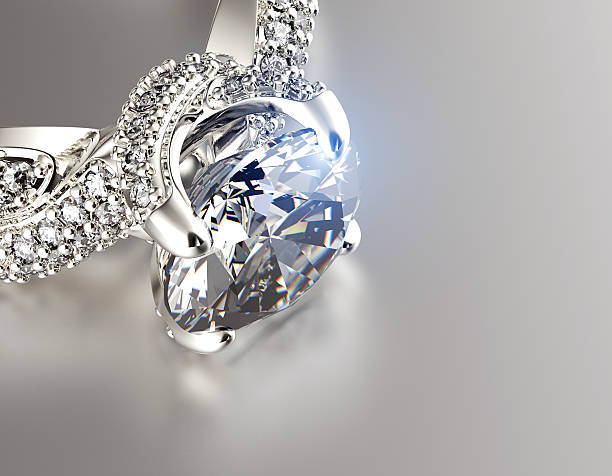I. Introduction
In recent years, lab-grown diamonds have surged in popularity as an ethical and eco-friendly alternative to mined diamonds. With the same optical qualities and chemical composition as mined diamonds, lab-grown diamonds are a compelling option for consumers who value ethics and quality. But can lab-grown diamonds provide a sustainable and humane solution for the diamond industry?

II. How Lab-Diamonds are Transforming the Industry?
The lab-grown diamond industry has revolutionized the traditionally slow-moving world of natural diamond production and sales. In the past, mining companies tightly controlled both supply and pricing. Cultivated diamonds are loosening those constraints by providing more choices and competition. Major retailers have begun offering appealing lab-grown jewelry collections, knowing customers increasingly want affordable, responsibly sourced options. As manufacturers boost output to meet rising demand, market share for lab diamonds will likely keep increasing. Cultivated diamonds empower consumers by serving as an attractive ethical and value proposition while nudging traditional sellers to upgrade transparency and sourcing standards. At the same time, production technologies advance to create gems more efficiently and cost-effectively.
III. Identical Properties of Mined Diamonds
Scientists have conducted extensive analysis and testing on lab-grown diamonds, examining their atomic structure and composition at the molecular level. Through techniques like electron microscopy, they have found that lab-grown and natural diamonds are chemically indistinguishable.
Both possess a crystalline structure of carbon atoms arranged in a repeating lattice or "atomic blueprint." This gives diamonds their renowned hardness of 10 on the Mohs scale, as the tight bonding makes them extremely difficult to scratch.
Additional properties like refractive index, dispersion, and infrared absorption spectra are identical between the two as well. The refractive index affects how light interacts and is reflected from a diamond's facets. Dispersion causes the "fire" or rainbow colors seen.
Manufacturers can manipulate variables to reliably rebuild natural diamonds' structure and optical characteristics atom by atom through scientific processes controlling temperature and pressure precisely during CVD or HPHT growth.
Even experts employing specialized gemological tools struggle to discern the difference. Tests such as x-ray luminescence, isotopic analysis, and photoluminescence spectroscopy all confirm the physical consistency of lab and mined varieties.
In short, modern synthesis methods have successfully recreated diamonds' molecular architecture faithfully, imbuing lab-grown diamonds with the same dazzling brilliance and durability as those formed underground over geological eras.
IV. Environmentally Friendly Attributes
Mining for natural diamonds causes a lot of damage to the environment. Giant open pits have scarred beautiful areas forever. Water gets dirty from chemicals used to dig up diamonds.
Wild animals lose their homes when mines destroy forests and fields. Mines also release gases that warm up our planet. Cleaning up the mess costs millions after the mine closes. Some people don't want to buy "dirty" diamonds because of this.
Making diamonds in factories is better for nature. They recycle air and water inside buildings so nothing gets dumped outside. Plants run on clean energy like sun and wind too. Lab diamonds make less global warming gases over their whole lives.
When comparing the environmental impact against traditional mining, lab-grown diamond production has far fewer ecological consequences. Typical underground mining ravages local environments disturbs ecosystems, and risks chemical contamination of surrounding areas. Manufacturing diamonds above ground eliminates this destructive process. Furthermore, the energy consumption for advanced facilities using recycled gases is much lower than for mining operations.
V. Social and Labor Benefits
Diamond mining has historically been linked to exploited labor, unsafe working conditions, and funding of regional conflicts. In contrast, lab-grown diamonds are manufactured in state-of-the-art facilities that adhere to regulated and ethical labor standards. There are no risks of child labor or accidental injuries associated with hazardous mine jobs. Employees are paid fair wages in conflict-free environments.
Lab-grown diamond adheres to a more transparent supply chain, ensuring compliance with human rights priorities. This promotes sustainable economic opportunity in local communities.

VI. Affordable Luxury
Mined diamonds have a tightly controlled supply pipeline, leading to inflated prices and limited consumer access. Lab-grown diamonds open the market to more fairly priced diamond jewelry. As production scales up, prices for man-made diamonds have fallen, with costs 30-40% less than equivalent natural diamonds today. This makes lab-grown diamonds an affordable luxury for wider demographics.
VII. Consumer Demand Driving Market Growth
With increasing awareness of the ecological and humanitarian benefits, consumers deliberately choosing lab diamonds have propelled the market forward. Younger demographics, particularly, are attracted to lab-grown diamonds' ethical origins and affordability. As demand increases, further technological improvements will continue to drive down production costs and retail prices.
VIII. Conclusion
In conclusion, lab-grown diamonds represent a sustainable path forward for the jewelry industry and consumers who want an ethical purchasing choice. By creating quality gems without harming people or the planet, lab cultivation offers a bright alternative to the damaging impacts of traditional mining.
As production becomes even more efficient and prices remain affordable, demand for lab-grown diamonds will likely continue climbing in the coming years. More retailers and designers recognize that customers increasingly care about responsible sourcing alongside dazzling beauty.
With identical brilliance and properties at a fair price, lab-grown diamonds let everyone enjoy luxury while caring for communities and the earth. Consumers help protect lands, waters, and wildlife for tomorrow by selecting cultivated over mined. Their meaningful choices now promise a more sustainable sparkle for future generations to treasure just as much as ours.


Leave a comment